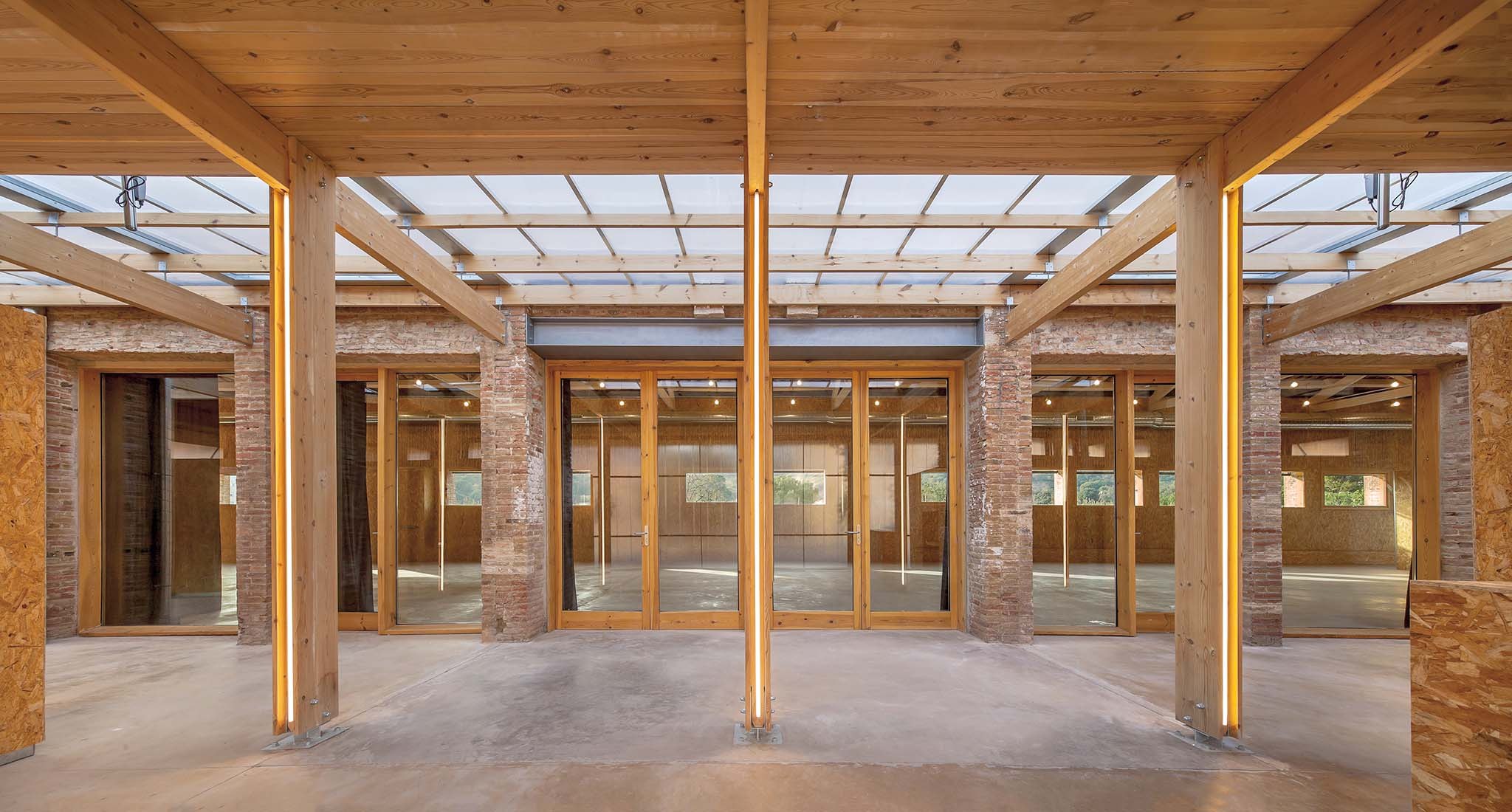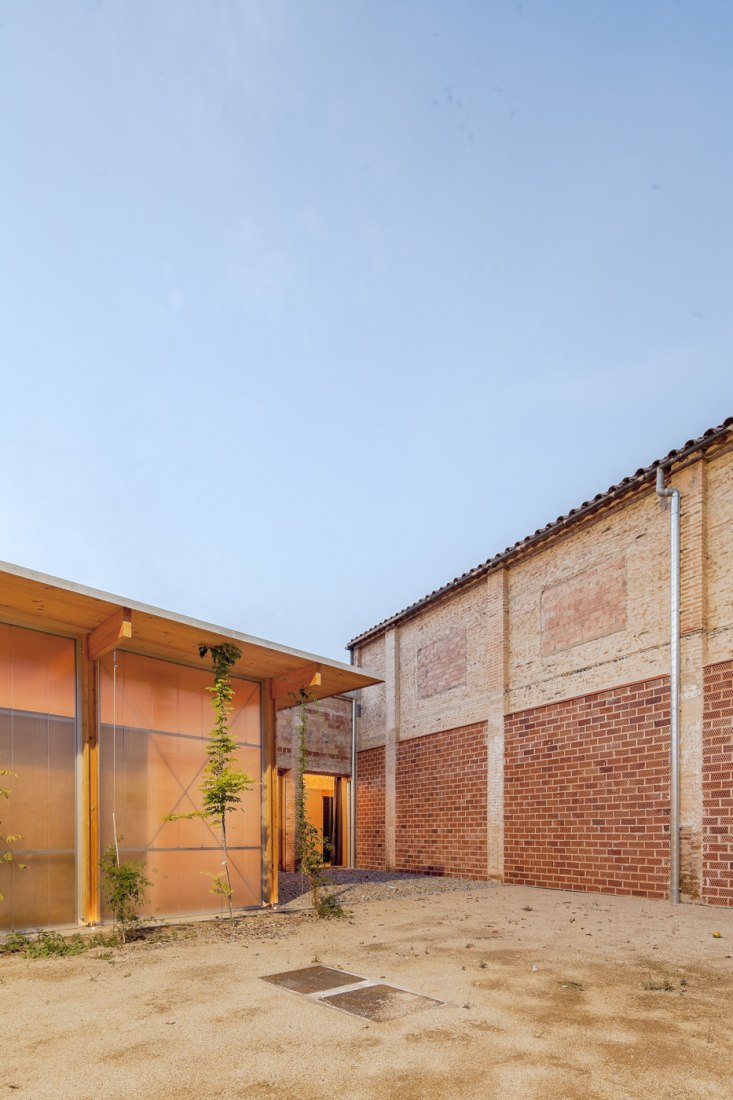The approach of the team formed by Nil Brullet Francí and Maria Morillo has been to value the architecture of the existing building itself, enhancing it and adapting it to the new functional requirements. While the most characteristic elements have been preserved, certain annexed volumes have also been demolished.
One of the most outstanding actions in the intervention is the emptying of the central patio of Can Luna to recover the original appearance, urban dimension and recover an outdoor meeting space that serves as access to the warehouses.
Description of project by Nil Brullet Francí and Maria Morillo
The industrial complex of Can Luna is located in the Northwestern part of La Garriga, adjacent to the Congost River (which delimitates the urban fabric) and in a key position for the urban development of the municipality.
The town council plans to transform the whole complex, formed by three large warehouses, into a new socio-cultural space. The transformation will be executed in 3 phases of which, at the moment, only the first has taken place (the one corresponding to the central nave), where the design of a polyvalent space is requested, that is to say, a wide space in the nave where to carry out all type of activities with its corresponding services. The project has taken into account the renovation of the whole complex.
The first action proposed is the emptying of the central courtyard of Can Luna (with the following demolition of the annexed volumes) in such a way that it recovers its original aspect, takes on an urban dimension and recovers a fairly large space from which to access the warehouses.
The demolition of the annexed volumes allows the realization of one of the main ideas of the project: the construction of a new access gallery that serves as an organizer of the circulation, allows a flexible access, and operates as a climate exchanger. That is, as a hygro-thermal and light regulator: in winter it closes its openings and captures radiation, in summer these are opened to ventilate through the skylights, and the vegetation and the cantilever protect the façade from radiation. The construction of the gallery is compatible with the phased execution requested by the city council. In the first phase, the one that has already been built, the part in front of the renovated building has been executed. In subsequent phases, the gallery will be completed as the rest of the buildings are rehabilitated.
The rehabilitation of building B itself, seeks to strengthen its architecture and to adapt the space to the new functional requirements. The first point that we faced, was to try to conserve the most characteristic element of the building, its ceramic roof with the powerful wooden trusses that organize the interior, for which it was necessary to reinforce both trusses and straps.
Then, the window sills were demolished, achieving two essential effects: to generate much wider openings that allow a better lighting of the interior and to create multiple accesses to the the building. At the same time, the windows of the facade were restored, projecting the views to the outside. This double intervention allows, keeping the prototypical morphology of walls and openings of industrial buildings, to achieve a greater visual permeability that crosses the building connecting the courtyard of Can Luna, the access gallery, the interior of the Nave and the green spaces on the margins of the Congost River.
On the other hand, it was also necessary to generate a watertight enclosure to climatically isolate Building B. With this objective, the interior faces of the walls were panelled with a light framework of OSB panels that generated an air chamber with generous insulation and a waterproof sheet. The roof, on the other hand, is insulated from above the ceramic tiles. The materials chosen seek to create a warm and unitary atmosphere inside the building: the new continuous OSB finishing -with a texture that recalls the industrial past of the factory as a textile center- intensifies the presence of the large wooden beams painted white to make them stand out. An ochre polished concrete floor is poured both in the warehouse and in the gallery, seeking the chromatic synthesis of the whole.
In the central patio, the introduction of the new access gallery, with a marked modern image, with a great presence of polycarbonate and elements of light structure in wood, reinforces, by contrast, the heavier essence of the old warehouses built with ceramic and stone materials that have been treated to recover the purest materiality of ceramics. The rest of the actions carried on the patio are provisional and have followed a strict budgetary containment: a soil pavement for the floor and some lattices of 'gero' placed on edge (of similar texture to the brick recovered from the facade) to cover the party walls that had been left uncovered due to the demolition of the annexed volumes.














































